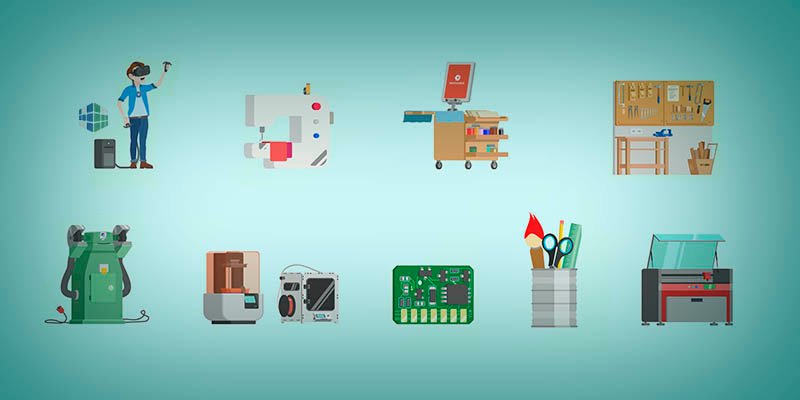Когда дело доходит до стилей обучения, «один размер подходит всем» — это подход, который просто не работает.
Например, при изучении языка некоторые люди предпочитают преимущественно слышать и говорить на нем, в то время как другие предпочитают изучать грамматику, лексику и построение языка. Первый человек, скорее всего, будет искать возможности поговорить на этом языке, в то время как последний, скорее всего, застрянет в книге.
Итак, ни один из этих подходов к обучению не является неправильным — они просто разные. Один работает на одного человека; другой работает для другого.
Уловка, конечно же, заключается в том, чтобы найти стиль обучения, который вам больше всего подходит. Это разные стили обучения, которые позволят вам учиться быстрее и проще. Эти стили будут для вас естественными. И они побудят вас жить жизнью, постоянно узнавая что-то новое.
Вот о чем эта статья. Я собираюсь помочь вам открыть для себя лучшие стили обучения, при этом призывая вас всегда учиться в своей жизни.
ОГЛАВЛЕНИЕ
- Что такое стили обучения?
- Когда стили обучения бесполезны
- Используйте индивидуальный подход с открытым разумом
- 5 советов для более быстрого и легкого обучения
Что такое стили обучения?
По сути, стили обучения — это метод, техника или система, которые призваны помочь людям учиться.
На самом деле существует несколько традиционных различных типов стилей обучения (и гораздо больше школ мысли по предмету обучения).
По данным Университета Вандербильта, существует более 70 различных стилей обучения, но, безусловно, наиболее популярными являются четыре стиля, отраженные в модели VARK:
- Визуальный (пространственный) — учащиеся лучше всего учатся, видя.
- Слуховой (слуховой) — учащиеся лучше всего учатся на слух.
- Чтение / письмо — лучше всего учащиеся учатся посредством чтения и письма.
- Кинестетический (физический) — учащиеся лучше всего учатся, двигаясь и делая.
Вы узнаете себя в одном из вышеперечисленных стилей?
Вероятно, да, хотя люди нередко лучше всего учатся, сочетая эти стили .
Давайте подробнее рассмотрим эти четыре стиля:
Визуальный стиль обучения
Визуальный стиль обучения лучше всего подходит для людей, которые любят смотреть видео и хотят видеть презентации, которые содержат изображения, диаграммы и графики. В образовательном уголке говорится, что:
«Человеческий мозг обрабатывает визуальную информацию намного быстрее, чем обычный текст. Как визуальный ученик, вы можете очень быстро усвоить и запомнить много информации, потому что вы предпочитаете этот метод обработки, в котором люди уже очень хороши ».
Слуховой стиль обучения
Слуховой стиль обучения лучше всего подходит тем, кто любит слушать лекции и аудиокниги. Этим учащимся легко запоминать то, что они слышат.
Настолько, что если они посмотрят фильм, они, скорее всего, запомнят то, что было сказано в фильме, а не действия, которые имели место.
Стиль обучения чтению / письму
Как и следовало ожидать, стиль обучения чтению / письму лучше всего подходит для людей, которым нравится читать и писать. Это потому, что слова, которые они читают и пишут, легко запечатлеваются в их сознании.
Идеи, абзацы и даже целые главы сохраняются без особых усилий людьми, для которых это является основным стилем обучения.
Кинестетический стиль обучения
Кинестетический стиль обучения лучше всего подходит для людей, которые любят «прикладываться».
Например, в колледже их могут привлекать научные дисциплины, которые позволяют им участвовать в экспериментах, или такие вещи, как машиностроение, которое, опять же, является предметом, который имеет множество физических взаимодействий.
Когда стили обучения бесполезны
Хотя каждый из нас учится по-своему, наш подход к обучению всегда должен быть гибким. Например, если вам нравится учиться, читая книги, вам не следует ограничивать себя только этим средством. Если вы это сделаете, вы можете упустить отличный контент в виде видео, живых презентаций и т. Д.
Мой совет: хотя найти свой преобладающий стиль обучения определенно полезно, не позволяйте этому держать вас в заложниках. Будьте свободны и гибки в обучении. Это сохранит ваш разум свежим и поможет вам достичь пика жажды учебы.
Также стоит помнить, что научного консенсуса относительно точности стилей обучения нет. Фактически, Scientific American недавно посвятил этой теме целую статью. В статье под названием «Проблема стилей обучения» исследуется научная литература, посвященная стилям обучения, и обнаруживается кое-что интересное: имеется мало доказательств, подтверждающих идею о том, что результаты обучения являются лучшими, когда методы обучения соответствуют стилям обучения отдельных людей.
Итак, как видно из вышеизложенного, наука определенно не остановилась на этом вопросе.
Вот почему я рекомендую вам…
Используйте индивидуальный подход с открытым разумом
По моему опыту, то, какой вы человек, несомненно, влияет на то, насколько быстро и легко вы учитесь. Но индивидуальные стили обучения — это только часть общей картины.
Большинство людей на самом деле лучше всего учатся, используя различные стили обучения.
Я рекомендую вам поэкспериментировать с различными стилями обучения, а не зацикливаться на одном. Это почти всегда самый эффективный способ повысить свои способности к обучению.
В статье на эту тему из Международного журнала прикладных и фундаментальных медицинских исследований делается вывод:
«Осведомленность об индивидуальных стилях обучения студентов-медиков 1-го курса и использование внешней регулируемой стратегии для улучшения обучения помогли студентам адаптироваться к другим стилям обучения. Это расширило использование передовых методов обучения и, как следствие, лучших результатов обучения. Таким образом, знание предпочтений студента в отношении стиля обучения VARK не следует рассматривать как ограничение для использования только этого конкретного стиля. Скорее, учителя должны приложить сознательные усилия, чтобы позволить ученикам изучить и другие стили обучения ».
5 советов для более быстрого и легкого обучения
Готовы сделать свое обучение быстрее и проще? Затем примените эти пять советов:
1. Подберите свой собственный доминирующий стиль обучения и посмотрите, где вы можете применить его в своей жизни.
Например, если вы учитесь строить шкафы для дома, лучше всего вы научитесь из нескольких обучающих видеороликов или попросите кого-нибудь напрямую показать вам, как это делается?
А как насчет того, чтобы узнать чье-то имя — может быть, вам будет проще записать его имя (например, добавить его в качестве контакта в свой смартфон), чтобы сохранить информацию?
Как только вы поймете, какой стиль обучения вам больше всего подходит, вы сможете оценить, в каких областях вам следует его применить и где вы могли бы применить другие стили обучения в определенных ситуациях.
2. Смешайте свои техники
Так же, как ваши мышцы могут расти и укрепляться во время упражнений, ваш мозг может расти, особенно если вы выйдете из своей обычной учебной рутины. Недавнее исследование Медицинской школы Джонса Хопкинса подтверждает это:
«Мы обнаружили, что если вы практикуете слегка измененную версию задачи, которую хотите освоить, вы на самом деле узнаете больше и быстрее, чем если бы вы просто продолжали практиковать одно и то же несколько раз подряд».
3. Улучшите свои слабые места
Возможно, вы обнаружили, что НЕ обучаетесь на слух. Что ж, вместо того, чтобы просто отказываться от слухового обучения, вместо этого посмотрите на это как на захватывающую задачу, которую нужно улучшить в этой области. Один из способов сделать это — приложить решительные и настойчивые усилия для прослушивания подкастов и аудиокниг.
Обучение — это просто вопрос оттачивания и улучшения тех областей, в которых вы испытываете недостаток, поэтому разумно сосредоточиться на самообучении, чтобы получить быстрые результаты. И хорошая новость заключается в том, что по мере того, как вы в целом укрепите свои когнитивные навыки, вам станет легче учиться.
4. Читайте вслух все, что вы пытаетесь выучить, для лучшего удержания
Вы когда-нибудь пробовали делать это, читая статью или книгу? Конечно, это немного тормозит. Но это действительно помогает закрепить информацию, которую вы читаете (и говорите), в вашем уме и памяти. И вам не нужно верить мне на слово, поскольку исследование Университета Ватерлоо показало, что «произнесение текста вслух помогает закрепить слова в долговременной памяти».
5. Регулярно проверяйте себя.
Один из лучших способов улучшить удержание информации — это проверить себя на ней. Например, если вы смотрите видео о том, как начать свой бизнес, не просто посмотрите его и не забудьте. Вместо этого проверьте себя на следующий день по ключевым идеям видео. Это обязательно поможет вам запомнить и понять содержание.
Последние мысли
Я искренне надеюсь, что эти советы помогут вам учиться быстрее и умнее. Но, конечно, как я всегда люблю говорить, вам нужно применять советы в своей жизни, чтобы они оказали реальный эффект.
Одно дело читать о чем-то, а другое — что-то с этим делать.
Однако, поскольку вы зашли на сайт Lifehack и добрались до конца этой статьи, я уверен, что у вас есть необходимая мотивация, чтобы применить и извлечь пользу из этих советов. И как только вы это сделаете, я гарантирую, что вы начнете учиться лучше, чем когда-либо прежде, и, как следствие, у вас разовьется новая любовь к учебе, которая продлится вам всю жизнь.
«Обучение должно приносить радость и возбуждение. Это величайшее приключение в жизни; это иллюстрированный экскурс в умы знатных и ученых ». — Тейлор Колдуэлл




















ОТВЕТИТЬ